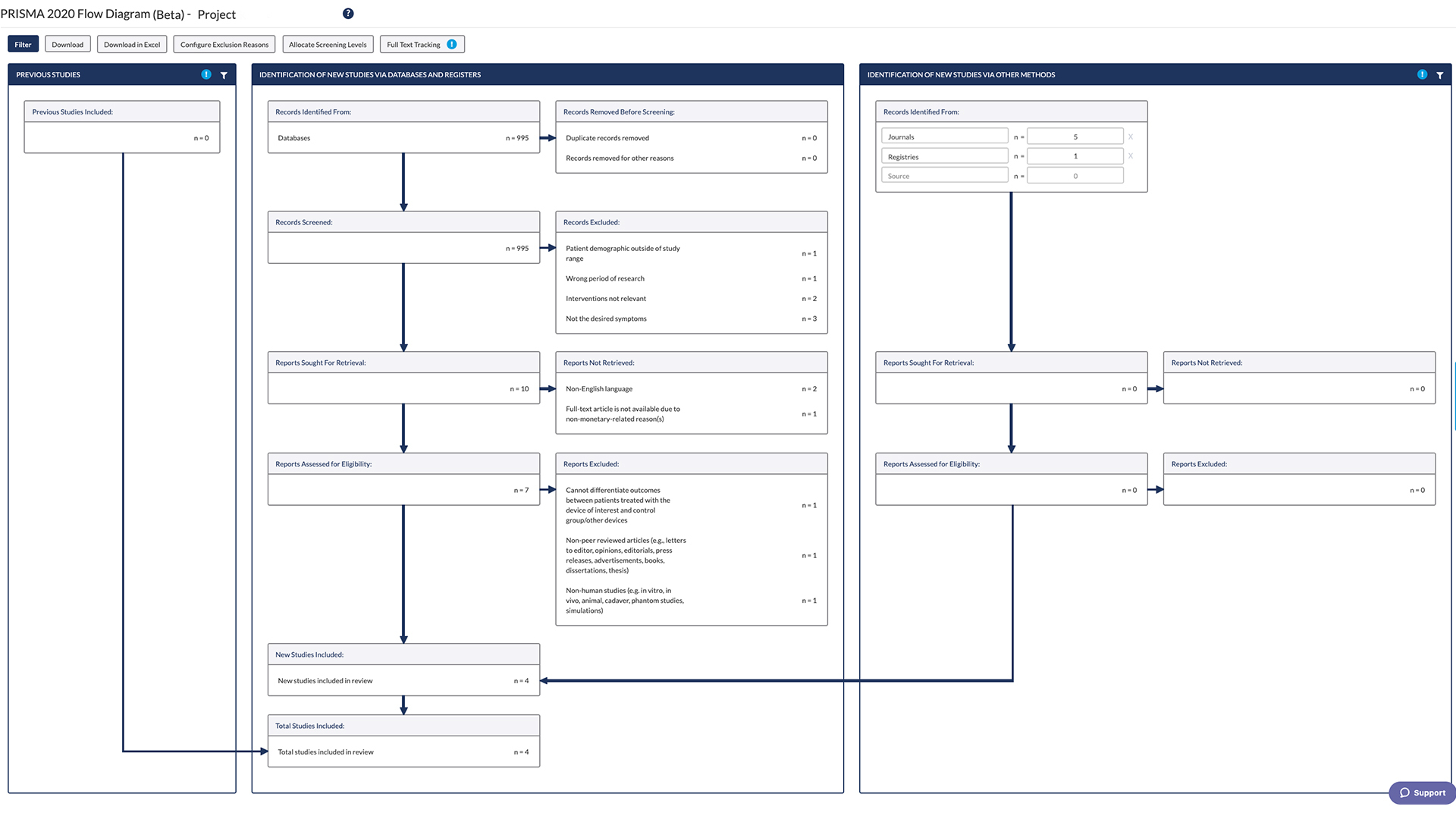About Systematic Reviews
PRISMA Flow
Diagram Example


Automate every stage of your literature review to produce evidence-based research faster and more accurately.
PRISMA was designed to guide the transparent reporting of systematic reviews. One of the ways it does this is through the PRISMA statement flow diagram, a 4-stage flowchart that maps out the flow of information through the research process. It illustrates how studies are identified, screened, and included or excluded for the review. With a PRISMA flow diagram, a reader can see how the number of articles first identified through database searches is purged to a collection of studies that are ultimately reviewed. For example, 50 titles or abstracts may be used from an initial list of 500.
What Is the Purpose of a PRISMA Flow Diagram?
After understanding what a PRISMA flow diagram is, it is natural to wonder about its purpose. First, it is made to enhance the value of reviews as it helps reporters achieve higher reliability and better explicitness as it guides them through selecting relevant studies. The flowchart is particularly preferred in systematic reviews in healthcare because it helps to synthesize the findings of multiple studies and summarize the best available research.
Aspects of a PRISMA Flow Diagram
There are two versions of the PRISMA flow diagram, both of which have templates that you can download for easy use. Knowing which one to choose depends on the type of systematic review (new or updated) and the sources used for study identification (ie, whether just databases and clinical trials or including gray literature). Generally, though, these diagrams contain the following parts:
Records identified
“Records identified” refers to all the titles and abstracts found in your searches. Run searches including all of your terms, subject headings, etc, and apply all the relevant limits. The number of articles that come up for each will be your “records identified,” which you can also note as separate numbers per database.
Records removed before screening
Before you start screening your articles, you must remove any duplicates from the initial search. The number of removed duplicates is written in “records removed before screening.”
Records screened
“Records screened” is the number of “records identified” minus the removed duplicates. This refers to all the titles and abstracts that you will screen for relevance to your research question.
Records excluded
After the screening, note the number of any articles to be excluded (ie, those found to be irrelevant to your systematic review) in “records excluded.” You can also add exclusion reasons here, but it is optional – you’ll have to do it later on, though.
Reports sought for retrieval
“Reports sought for retrieval” are those to be obtained in preparation for full-text screening. It is the difference between “records screened” and “records excluded.”
Reports not retrieved
Once you begin retrieving full texts, you may find that some titles are inaccessible. If you’ve exhausted all tools and resources to try to obtain the full text, yet are still unable, add the number of unavailable articles to “reports not retrieved.”
Reports assessed for eligibility
The number of “reports assessed for eligibility” is the difference between “reports sought for retrieval” and “reports not retrieved.” These articles should be assessed to check their eligibility for inclusion in the systematic review.
Reports excluded
“Reports excluded” tallies the number of articles that will be excluded after full-text screening due to their ineligibility for inclusion in the systematic review. Articles that are ineligible will meet exclusion criteria such as wrong setting, wrong population, etc. In this section, you must explain why you made the exclusion.
Studies included in review
This comprises the “reports assessed for eligibility” minus “reports excluded,” which provides the number to input in “studies included in review.”
Learn More About DistillerSR
(Article continues below)
Learn More from DistillerSR
PRISMA makes systematic reviews more organized and transparent through guidelines such as its 27-point checklist (check out our PRISMA 2020 Checklist example) and its flow diagram. PRISMA is an important guideline to follow when undertaking a systematic review, whether you’re doing the process manually or using software like DistillerSR to automate some steps.









